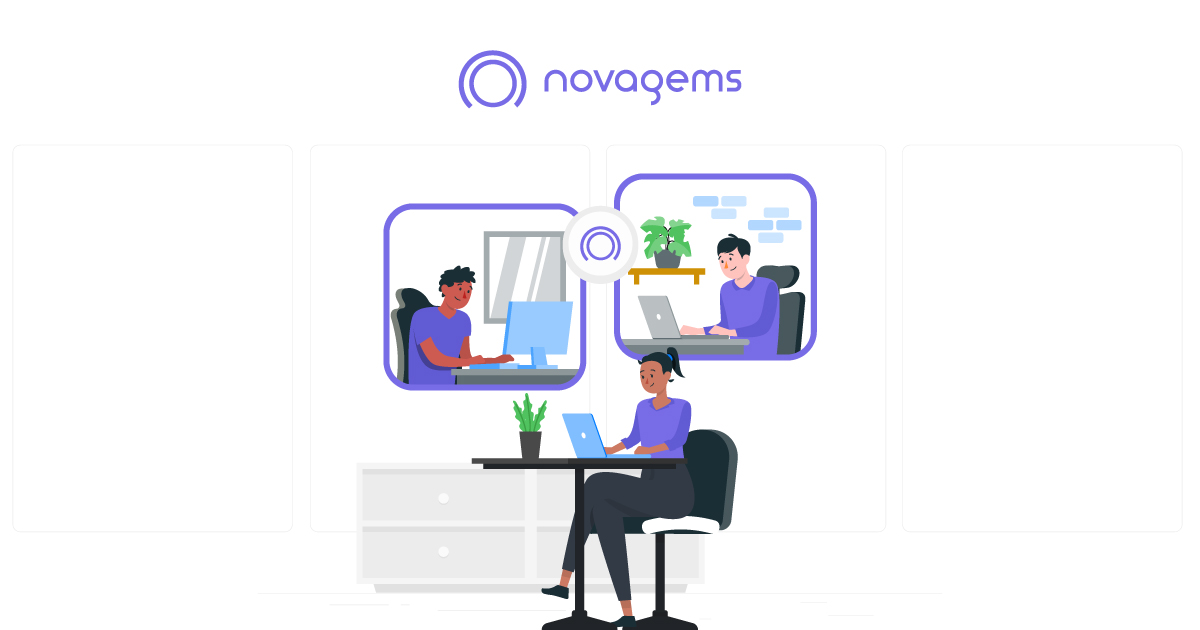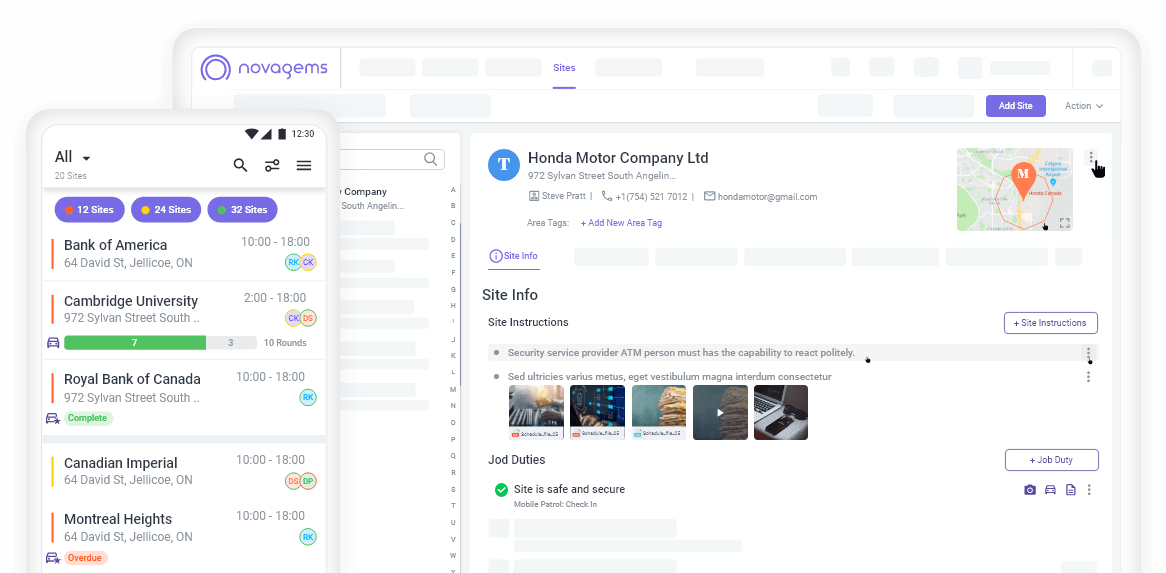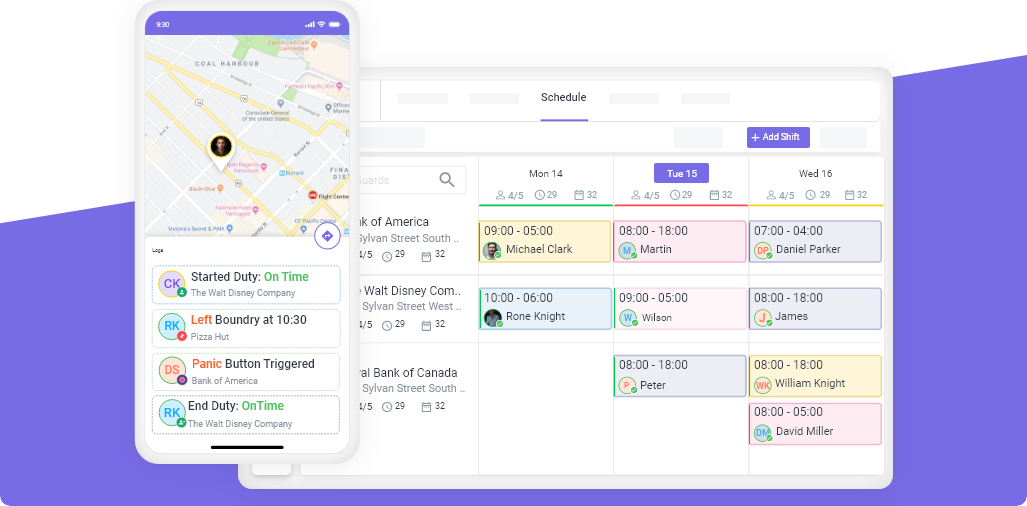A Guide to Managing Your Remote Workforce Management Team
Published on: Thu, Jul 3, 2025
Read in 8 minutes

Key Takeaways
- Miscommunication is the #1 cause of inefficiency in remote work.
- Use tools like Slack, Zoom, Google Meet for real-time interaction.
- Schedule regular check-ins to maintain transparency and team alignment.
Remote work has become a significant part of many businesses over the past few years. With the growing shift to remote and hybrid work models, managing remote employees effectively has never been more important. While working remotely offers many benefits, it also presents its own set of challenges. As businesses transition to fully remote teams, it’s important to understand the challenges of remote workforce management and find solutions that help overcome these obstacles. 74% of U.S. companies are using or planning to implement a permanent hybrid work model.
In this guide, we will explore key tips for managing remote employees, discuss the challenges of remote workforce management, and provide practical solutions to improve how you manage your remote team.
Tips for Remote Workforce Management
Managing a remote team requires more than just the right tools—it’s about creating a system that ensures employee management remains smooth and effective. Without face-to-face interaction, managing a team can become more complicated. Here are some tips to help you manage your remote employees more efficiently and overcome common challenges.
1. Use the Right Tools for Communication
Effective communication is the foundation of any successful remote team. Without face-to-face interactions, it’s easy for miscommunications to happen. Employee management software that offers features like instant messaging, video calls, and file sharing can help bridge the gap. Tools such as Slack, Zoom, and Google Meet are great for staying connected and communicating with your team in real-time.
Additionally, using workforce management software like Trello or Asana can help you track tasks, set deadlines, and ensure that all team members are on the same page. This will make it easier for remote employees to collaborate and stay on top of their responsibilities.
2. Set Clear Expectations
When managing remote employees, it’s essential to set clear expectations regarding work hours, performance, and deadlines. Remote workers may have flexible schedules, but it’s still important to establish a clear framework that everyone follows. Make sure each remote employee knows what is expected of them, including what tasks they need to complete, when they need to complete them, and how they will be evaluated.
By setting clear performance goals, you help ensure that everyone is working towards the same objectives, even if they’re not working in the same office space. This is where performance management tools come in handy. They can help you set objectives and monitor progress without having to check in with each employee.
3. Promote Flexibility and Autonomy
One of the key benefits of remote work is the flexibility it offers. Many remote employees prefer the ability to set their own schedules, as long as they meet deadlines and complete tasks on time. Allowing your team members to manage their own schedules fosters trust and can lead to higher job satisfaction and productivity.
However, it’s important to find a balance between flexibility and structure. Encourage employees to set up a work-time structure that works for them, but make sure they are meeting performance management expectations and delivering results.
4. Foster Collaboration and Team Engagement
While remote teams don’t have the benefit of in-person interactions, you can still encourage collaboration and engagement through regular check-ins, video calls, and virtual team-building activities. Organizing virtual team meetings allows your team to discuss ongoing projects, share ideas, and address any issues.
Creating opportunities for remote employees to interact socially, like virtual coffee breaks or after-work video chats, can help foster a sense of community and prevent feelings of isolation. Regular check-ins also ensure that your remote employees feel supported and valued, improving overall morale.
5. Focus on Results, Not Time Spent Working
Rather than focusing on how many hours a remote employee works each day, shift your focus to the quality and results of their work. Tracking output and performance, rather than hours worked, can help ensure that your remote workforce remains productive and motivated.
Using employee time management software can help both you and your team track the time spent on tasks, but it’s important to remember that the results are what truly matter. Setting clear performance management goals and ensuring that employees are meeting those goals is the best way to measure success.
Main Challenges of Remote Workforce Management
Managing a remote workforce presents unique challenges that can be difficult to overcome. Here are some of the main challenges you might face when managing remote employees, along with solutions to address them.
1. Lack of Collaboration Tools
One of the biggest challenges in remote workforce management is ensuring that team members can collaborate effectively. Without the right tools, remote employees can struggle to communicate, share files, and work together on projects.
Solution: Invest in the right collaboration tools. Platforms like Google Drive, Microsoft Teams, and Slack can help your team stay connected and collaborate seamlessly. These tools ensure that remote workers can share ideas, track tasks, and communicate quickly, improving collaboration across the board.
2. Issues of Communication and Transparency
Communication issues are one of the most common challenges of managing remote employees. Without face-to-face interaction, misunderstandings can happen, and employees may not feel fully informed about what’s going on within the company.
Solution: To address communication issues, set up regular video calls and team meetings. Use project management tools like Trello to track progress on tasks and provide transparency for your team. This ensures that everyone is on the same page and has access to the information they need to succeed.
3. Challenges in Promoting Inclusivity and Diversity
Remote work can sometimes make it harder to foster inclusivity and diversity. Employees from different backgrounds may feel disconnected, especially if they work in different time zones or have different work habits.
Solution: Promote an inclusive environment by ensuring all remote employees feel heard and valued. Encourage open discussions, hold virtual cultural celebrations, and make an effort to recognize and celebrate diversity within your team. Creating an inclusive environment will help everyone feel more connected and supported.
4. Setting Performance Goals
Setting clear performance management goals for remote teams can be more challenging than managing in-office teams. With fewer direct interactions, it can be hard to track how well employees are doing and whether they are meeting expectations. Remote workers are 35–40% more productive than their in-office counterparts.
Solution: Use employee management software to set and track clear goals for each remote worker. Regular check-ins and performance reviews can also help ensure that everyone is meeting expectations and staying on track. Be specific about what you want to achieve and how success will be measured.
5. Risks of Burnout and Isolation
Working from home can sometimes lead to feelings of isolation and burnout. Remote employees may struggle with the lack of social interaction or feel overwhelmed by the blurring of boundaries between work and personal life.
Solution: Encourage employees to take regular breaks and set clear boundaries between work and home life. Offer support by providing access to wellness resources and virtual social events. Creating a work culture that prioritizes mental health and well-being will help prevent burnout and keep your team happy and productive.
6. Adapting Company Policies
Adapting company policies to accommodate remote employees can be tricky. Policies regarding work hours, performance expectations, and communication may need to be updated for remote teams.
Solution: Review and update your company’s policies to make sure they are appropriate for remote work. Clearly communicate these updates to your remote employees, ensuring everyone understands the expectations and guidelines. This will help prevent confusion and ensure everyone is on the same page.
7. Time Management Issues
Time management can be a major issue for remote employees, especially when they are managing tasks at home with fewer external distractions. Without proper time management tools and guidance, remote workers can struggle to stay productive.
Solution: Use employee time management software to track the time spent on tasks and ensure employees are staying on track. Encourage employees to set daily or weekly schedules and help them prioritize tasks. Time management tools will also help you assess whether employees are meeting deadlines and completing work on time.
8. Decreased Team Spirit
Without the usual in-person interactions, it can be difficult to maintain a strong team spirit among remote employees. Working alone can lead to feelings of disconnection and reduce collaboration among team members.
Solution: Organize virtual team-building activities and regular catch-ups. Encourage open communication and create opportunities for informal interactions. Recognizing achievements and celebrating milestones can help improve morale and team spirit, even in a remote setting.
9. Workplace Safety Issues
Remote employees may face health and safety risks while working from home. Unlike traditional offices, employers cannot monitor the physical environment of remote workers, which may lead to risks such as poor ergonomics or unsafe home office setups.
Solution: Provide guidelines on creating a safe and ergonomic home office. Offer resources on how to set up a proper workstation to reduce the risk of injury. Regularly check in with employees to ensure they are working in a safe and comfortable environment.
Conclusion
Managing a remote workforce comes with its unique set of challenges, but with the right strategies and tools, you can create a productive, happy, and engaged team. By addressing issues such as communication, performance management, and employee burnout, you can overcome many of the obstacles that come with remote work.
Remember to set clear expectations, invest in the right tools, and support your remote employees. By doing so, you’ll build a strong, cohesive team that can thrive in a remote work environment. With proper workforce management and attention to employee well-being, your remote team can be just as effective as an in-office team, if not more.
Get a Free Trial
Sign up For Newsletter
Latest Blog Posts
Get Started
Start being productive & grow your business
with Novagems





